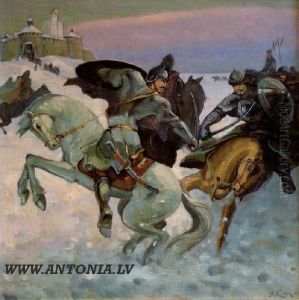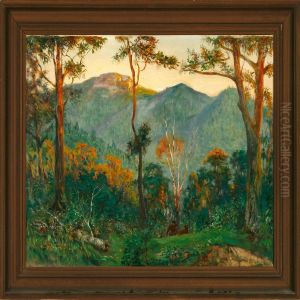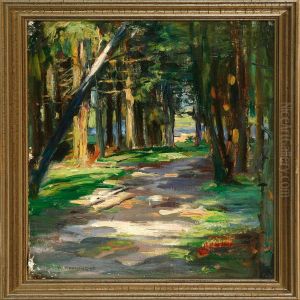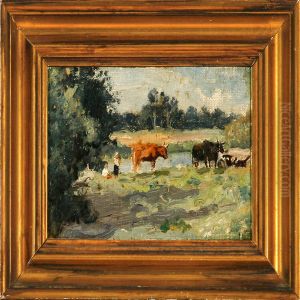Alexei Nikolaevich Klementiev Paintings
Alexei Nikolaevich Klementiev was a Soviet artist, born in 1914 in Russia. He is often remembered for his contributions to Soviet art, particularly in the realm of Socialist Realism, which was the official state-sanctioned art style of the Soviet Union from the 1930s onwards. This style was characterized by the glorified depiction of communist values, such as the emancipation of the proletariat, the development of industry, and agricultural achievements.
Klementiev's work as an artist developed during a period of intense political and social change in the Soviet Union. The 1930s were marked by Joseph Stalin's consolidation of power and the beginning of the Great Purges. The tightening control over cultural production demanded that artists like Klementiev adhere to the strict guidelines of Socialist Realism, which meant that their art had to be accessible and ideologically sound to promote the Soviet agenda.
During his brief career, Klementiev was known to have created works that celebrated the everyday heroes of the Soviet Union, such as workers, soldiers, and farmers. His paintings would typically depict robust, healthy figures engaged in productive labor or reflecting the ideals of Soviet patriotism and strength. The optimism and heroism conveyed in these works were intended to inspire viewers and affirm the government's vision of a prosperous socialist society.
Unfortunately, Klementiev's life and career were cut short by the events of World War II. He died in 1941, the year when the Soviet Union became deeply embroiled in the conflict following Operation Barbarossa, the German invasion of the Soviet Union. As such, his body of work is limited, and his name is not as widely recognized as some of his contemporaries. Nonetheless, Klementiev's contributions provide an example of the role that art played in Soviet propaganda and the shaping of public consciousness during a critical period in Russia's history.



